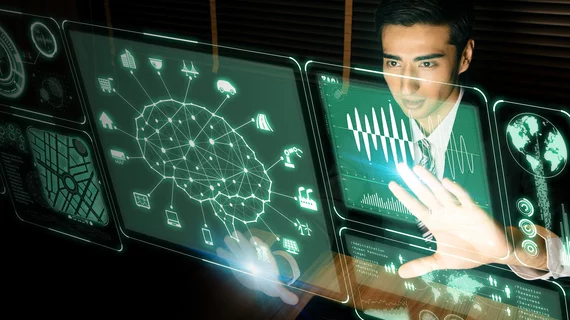A ‘scientific evolution’: How radiologists can help develop responsible AI
Radiology has experienced many changes over the years, from CT scanning to picture archiving and communication systems. AI will be the next big change, but radiologists can ensure its done the right way.
That’s the sentiment Andrea Rockall, clinical chair of radiology, Imperial College London, expressed in an Oct. 31 editorial published in Clinical Radiology. She argued that imaging experts are in a unique position to develop and deploy what she calls “responsible” AI.
“The key is to ensure that AI is used to address important unmet clinical needs, whether in relation to triage and diagnostic tools, improved workflow or sustainability of healthcare,” Rockall explained. “Applications of AI must primarily serve patient needs, not just what's interesting or feasible.”
Data, data, data
Rockall called data the “beating heart” of AI. Responsibly created AI would include a solid ethical framework, engagement from patients and responsibility from those who use it. Ensuring that data is used in accordance with privacy laws should also be top of mind.
While curating datasets can be time-consuming and difficult, radiologists are in a good position to make sure they are high quality.
In order for research to “really fly,” Rockall noted, unbiased and safe strategies must be established to ensure innovative thinkers can help create such datasets. Professionals who manage tissue banks may be of help on this, she added.
The road ahead
Clinical radiologists are dealing with new research methods, protocols and a world of open-access information; but Rockall believes the specialty must go back to traditional “diagnostic test accuracy” methods to validate AI.
Of course lab testing is necessary, she argued, but doing so in the real-world is “essential.” Radiologists are already doing this with academic institutions, but there can be no room for AI to morph into an unregulated and damaging technology as has been the case for some aspects of the internet and social media, she wrote.
Protocols and methods for validating AI are already being developed, and radiology needs to fully embrace its regulation for clinical use, Rockall added.
“Our broad radiology community has a unique opportunity to engage with this exciting scientific evolution, working with interdisciplinary ‘convergence science’ teams,” Rockall concluded. “We should not fear the changes involved, but we must engage with them to ensure patient benefit, and a continuing meaningful role for radiologists.”

